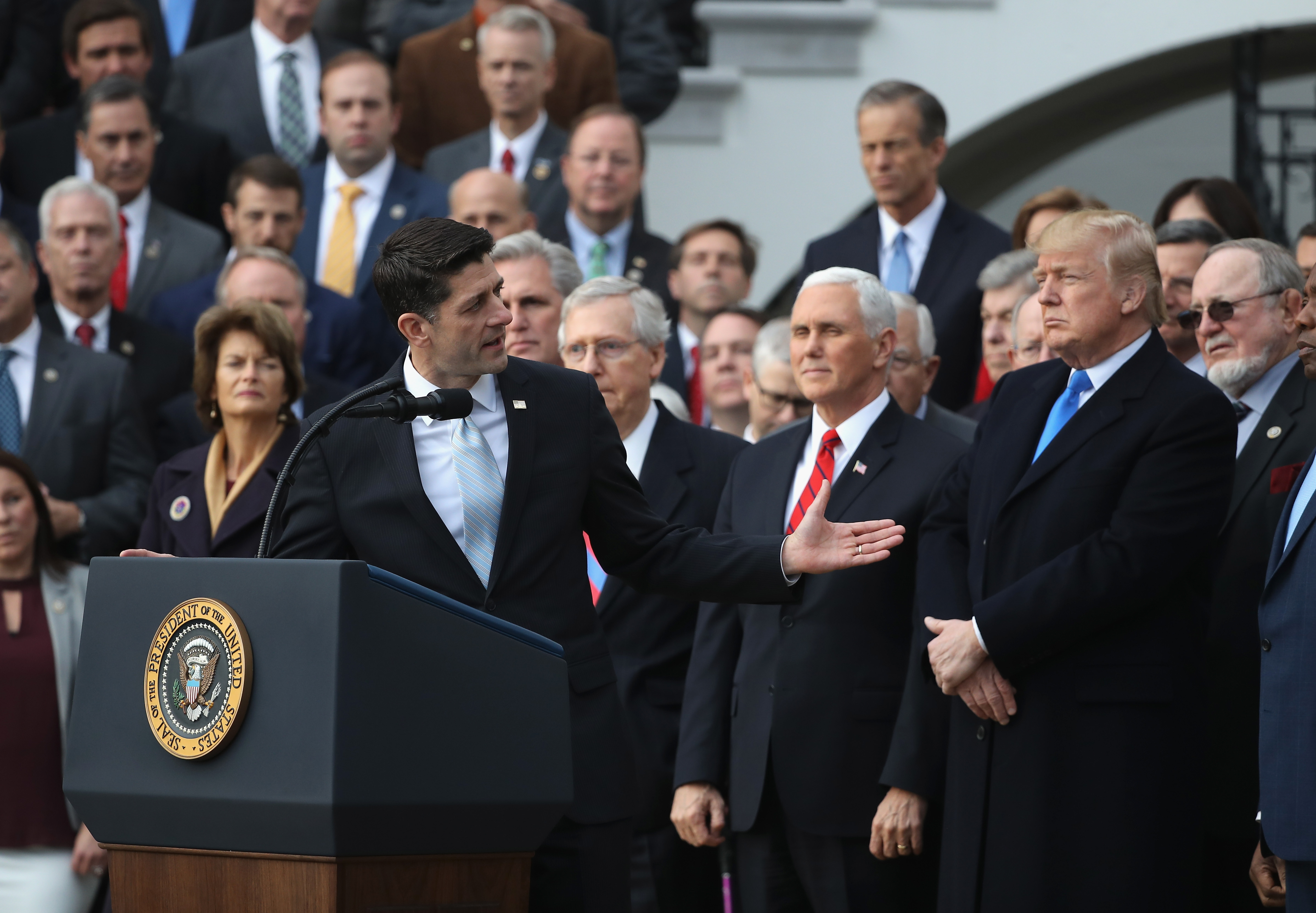- Americans are spending more because of a healthier economy and federal tax cuts that tie back to President Donald Trump’s policies, Heritage Foundation tax policy analyst Adam Michel told The Daily Caller News Foundation Thursday.
- That spending is part of the reason why 19 states reported better-than-expected general fund revenue after reaping more in sales tax.
- “[Trump] can also take credit for the larger economy to the extent that that’s now fueling additional spending,” Michel told TheDCNF.
The Tax Cuts and Jobs Act touted by President Donald Trump is one of three reasons that at least 19 states are reporting unexpectedly high general fund revenue halfway through fiscal year 2019, tax policy expert Adam Michel told The Daily Caller News Foundation Thursday.
“[Trump] can also take credit for the larger economy to the extent that that’s now fueling additional spending,” Michel, a Heritage Foundation policy analyst, told TheDCNF via telephone. “It’s not only the Tax Cuts and Jobs Act that’s growing the economy but his deregulatory agenda is fueling economic growth. All of those things wouldn’t have happened if he didn’t push for them.”
Increased spending in the larger economy gave state sales tax revenue a boost.
“I think we will see most states end up with more revenue at the end of the year,” Michel told TheDCNF. Heritage is a conservative think tank located in Washington, D.C. (RELATED: Ocasio-Cortez Touts New House Rule That Makes It Easier To Raise Taxes)
The current fiscal year will hit its halfway point on Dec. 30. The National Association of State Budget Officers (Nasbo) released a report Thursday that said 19 states have received general fund revenue that exceeded expectations for fiscal year 2019. Those states include Georgia, Pennsylvania, Washington and Connecticut, reported The Wall Street Journal. The latter state expects to take a $600 million chunk out of its budget gap by summer 2021 thanks to the increased revenue, reported WSJ.
Fourteen states say their revenue is meeting expectations for fiscal year 2019, while five report falling short, according to the report cited by WSJ.

U.S. House Speaker Paul Ryan gestures to President Donald Trump, flanked by Republican lawmakers, at a celebration of Congress passing the Tax Cuts and Jobs Act on the South Lawn of the White House on Dec. 20, 2017 in Washington, D.C. (Photo by Chip Somodevilla/Getty Images)
The revenue increases are directly tied to the Tax Cuts and Jobs Act (TCJA) touted by Trump, Michel told TheDCNF.
“Because the federal tax code expanded what is taxable income — the main change being they eliminated the exclusions for individuals and children and they compensated in other areas — income that is taxable at the state level for many states went up,” he said. “So we should expect to see in a majority of states income tax revenue rise because of the changes in the Tax Cuts and Jobs Act.”
The last nationwide change that affected the increased revenue was the Supreme Court’s South Dakota v. Wayfair, Inc., ruling in June, Michel told TheDCNF. The ruling broadened the ability of states to collect sales tax from online retailers.
“The [Trump] administration also argued in front of the Supreme Court on the side of the states that were asking for the power to tax more of the online sales tax,” Michel told TheDCNF. “The federal government and the states won, so his administration also played a part in expanding that authority.”
Fiscal year 2019 predictions from the Nasbo report include 2.1 percent projected growth for general fund revenues and 7.3 percent projected growth for state rainy day fund balances. That’s compared to a “recent low” of 1.6 percent rainy day fund balance growth in fiscal year 2010, according to the report.
Nasbo reported that 26 states expect to grow their rainy day fund balances in fiscal year 2019, according to WSJ. That’s compared to 31 states that did increase their balances in fiscal 2018, according to WSJ.
States are still adjusting to the TCJA, called the largest overhaul to the tax code seen since 1986, so tax experts cannot be sure “how much of the revenue gains states have experienced of late will be recurring versus one-time,” according to the Nasbo report.
The Tax Cuts and Jobs Act of 2017 was touted as Trump’s first major legislative victory.
Follow Evie on Twitter @eviefordham.
Send tips to evie@dailycallernewsfoundation.org.
All content created by the Daily Caller News Foundation, an independent and nonpartisan newswire service, is available without charge to any legitimate news publisher that can provide a large audience. All republished articles must include our logo, our reporter’s byline and their DCNF affiliation. For any questions about our guidelines or partnering with us, please contact licensing@dailycallernewsfoundation.org.












